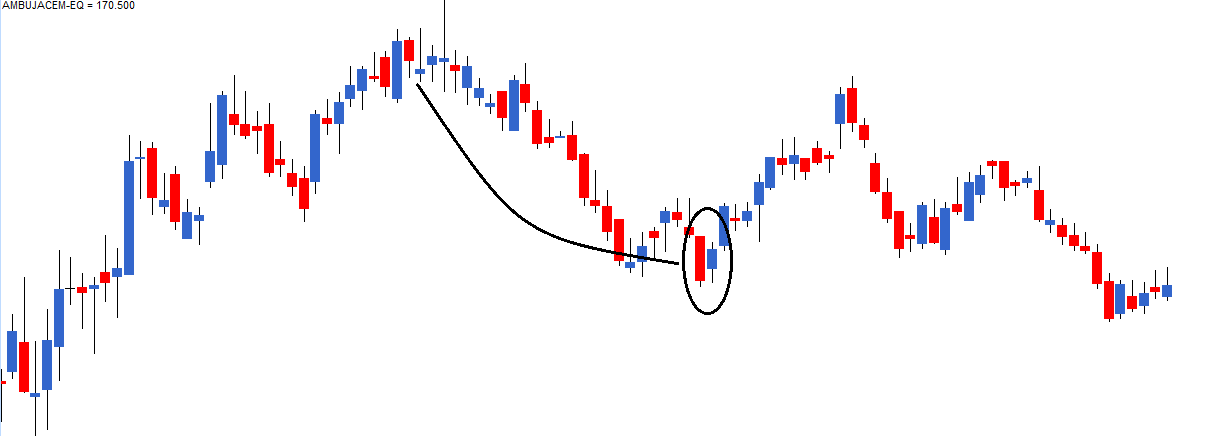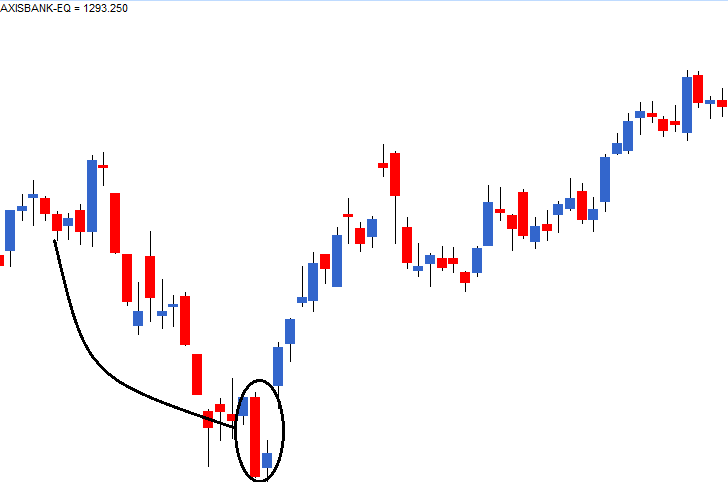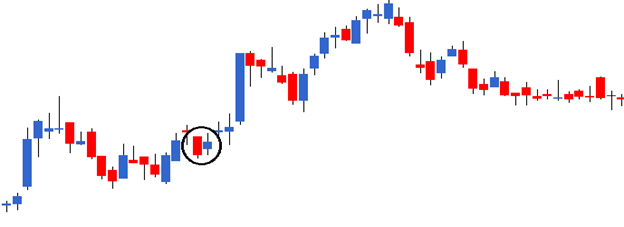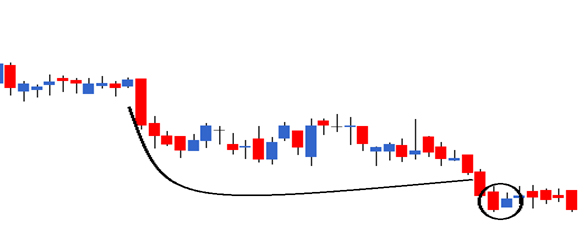Before you get thinking, the word ‘Harami’ does not stand for the word harami used in Hindi  . Apparently it is old Japanese word for ‘pregnant’. You’d appreciate the intuitiveness of this word, when you see the candlestick formation.
. Apparently it is old Japanese word for ‘pregnant’. You’d appreciate the intuitiveness of this word, when you see the candlestick formation.
 . Apparently it is old Japanese word for ‘pregnant’. You’d appreciate the intuitiveness of this word, when you see the candlestick formation.
. Apparently it is old Japanese word for ‘pregnant’. You’d appreciate the intuitiveness of this word, when you see the candlestick formation.
Harami is a two candle pattern. The first candle is usually long and the second candle has a small body. The second candle is generally opposite in colour to the first candle. On the appearance of the harami pattern a trend reversal is possible. There are two types of harami patterns – the bullish harami and the bearish harami.
The Bullish Harami
As the name suggests, the bullish harami is a bullish pattern appearing at the bottom end of the chart. The bullish harami pattern evolves over a two day period, similar to the engulfing pattern.
In the chart below, the bullish harami pattern is encircled.

The thought process behind a bullish harami pattern is as follows:
- The market is in a downtrend pushing the prices lower, therefore giving the bears absolute control over the markets
- On day 1 of the pattern (P1) a red candle with a new low is formed, reinforcing the bear’s position in the market
- On day 2 of the pattern (P2) the market opens at a price higher than the previous day’s close. On seeing a high opening price the bears panic ,as they would have otherwise expected a lower opening price
- The market gains strength on P2 and manages to close on a positive note, thus forming a blue candle. However P2’s closing price is just below the previous days (P1) open price
- The price action on P2 creates a small blue candle which appears contained (pregnant) within P1’s long red candle
- The small blue candle on a standalone basis looks harmless, but what really causes the panic is the fact that the bullish candle appears all of a sudden, when it is least expected
- The blue candle not only encourages the bulls to build long positions, but also unnerves the bears
- The expectation is that panic amongst the bears will spread in an accelerated manner, giving a greater push to bulls. This tends to push the prices higher. Hence one should look at going long on the stock.
The trade setup for the bullish harami is as follows:
- The idea is to go long on the bullish harami formation
- Risk takers can initiate a long trade around the close of the P2 candle
- Risk takers can validate the following conditions to confirm if P1, and P2 together form a bullish harami pattern:
- The opening on P2 should be higher than the close of P1
- The current market price at 3:20 PM on P2 should be less than P1’s opening price
- If both these conditions are satisfied then one can conclude that both P1 and P2 together form a bullish harami pattern
- The risk averse can initiate a long trade at the close of the day after P2, only after confirming that the day is forming a blue candle
- The lowest low of the pattern will be the stoploss for the trade
Here is a chart of Axis Bank; the bullish harami is encircled below:

The OHLC details for the pattern are as follows:
P1 – Open = 868, High = 874, Low = 810, Close = 815
P2 – Open = 824, High = 847, Low = 818, Close = 835
P2 – Open = 824, High = 847, Low = 818, Close = 835
The risk taker would initiate the long position at the close of P2 which is around 835. The stop loss for the trade would be lowest low price between P1 and P2; which in this case it is 810.
The risk averse will initiate the trade the day near the close of the day after P2, provided it is a blue candle day, which in this case is.
Once the trade has been initiated, the trader will have to wait for either the target to be hit or the stop loss to be triggered.
Here is a chart below where the encircled candles depict a bullish harami pattern, but it is not. The prior trend should be bearish, but in this case the prior trend is almost flat which prevents us from classifying this candlestick pattern as a bullish harami.

And here is another example where a bullish harami occurred but the stoploss on the trade triggered leading to a loss.




0 Comments